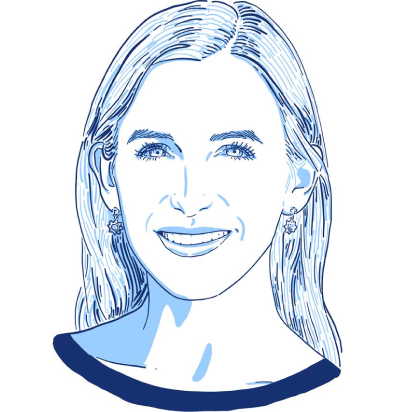Welcome to the 885 new marketers and founders who joined last week! This week we're covering product-led growth, surprises for retention, and testimonials.
If you don’t find this valuable, you can permanently unsubscribe at the bottom of this email. If you like it, tell your friends to subscribe here. |
|
|
Growth Summit 2022
Our Growth Summit is back for 2022, and you're invited to join us for the most advanced virtual event for growth professionals. Here's what you can expect: -
No fluff—just 15+ hours of insights from top growth professionals and startup founders.
- The best marketers in the world will tell you how they're currently growing their companies. Companies like Ahrefs, Every, Ladder, SparkToro, Backlinko, Clearscope, Appsumo, and dozens more.
You can get in for free by inviting three of your colleagues. Simply add your colleagues' emails when you register and we'll handle the rest. Or if you don’t want to invite others, you can just pay $500.
Claim your free ticket. 1. Don’t think of community- and product-led growth as separate strategies
Insight from OpenView. Community-led growth and product-led growth (PLG) are often talked about separately. But an effective go-to-market strategy can be to blur the lines between them. Embedding community in your PLG strategy could mean built-in virality. Examples: - Strava: Use it to work out. Stay because your friends and colleagues are on the app too, giving you kudos.
-
SparkToro: Use it for audience research. Love it because of the SparkToro team’s community participation, like bi-monthly office hours.
- Hacker News: Use it for news and commentary. Go to Y Combinator, which runs Hacker News, when you want to apply for a startup accelerator (example courtesy of Nir Eyal).
“Build community as a competitive advantage” is one of OpenView’s 11 principles for PLG. Compared to the old (and even fairly recent) days of establishing brand reputation through ads and trade shows, now “users are the brands. People respond to people, and look to folks they trust for advice. … Community isn’t just about creating another Slack channel. It’s about convening and connecting your target audience to help members achieve their own goals.” Five ways to foster community as part of PLG, from OpenView: - Highlight power users’ creations to amplify community creators. Example: Figma’s community plug-ins
-
Build relationships by connecting users with their peers. Example: Optimizely’s Developer Community
- Participate in existing communities where your users are active.
- Build a content community. Create informative content that will help your users out. Any good content marketing program does this.
-
Acquire an established community, like how Zapier acquired Makerpad (probably a later-stage method).
Don’t have a product yet? It’s not too early to start building a community to get people invested in your concept—and get invaluable early insights into what your users will want. 2. Delight customers with surprise raffles Insight from Marketing Examples. DTC and ecommerce shops, here’s a creative way to delight and retain customers after a purchase: - Buy raffle tickets. These are cheap—a roll of 500 costs less than $9 on Amazon.
-
For each order you ship out, include some raffle tickets. Instead of broadcasting your raffle on your site, keep it on the down-low. Only tell customers in their confirmation email or a note in their order what these tickets are for and why they should hold on to them—this makes the whole experience feel special.
-
Announce the winner via email or SMS. Then ship the prize to them. For raffle prizes, think small goodies that relate to your product.
|
Why this strategy works:
A raffle is old-fashioned fun, and in this case, it’s unexpected. By delivering unexpected value, it creates delight—and studies show that delight improves customer loyalty.
This strategy might work especially well for subscriptions like FabFitFun and Birchbox since they have recurring orders. You can easily include raffle tickets with each scheduled shipment. 3. Get infomercial-level video testimonials
Insight from Nothing Held Back.
Good video testimonials work wonders in landing more sales. In fact, for 89% of enterprise companies, they can drive anywhere from 25% to 50% lifts in conversions.
But many companies struggle to produce video testimonials quickly and cost-effectively. They spend as long as six months on video production, often recording customers at live events or sending videographers to film their subjects directly. They don’t realize that you can get informercial-level video testimonials without traveling anywhere or investing in expensive equipment. Here’s how: - Identify your top customers. Depending on your product or service, these might be your repeat buyers, customers with high engagement, or those who’ve consistently referred your business to others or given high NPS scores.
-
Create an enticing offer in exchange for a short video interview about your product. A few examples: an exclusive discount, credit toward customers’ next purchase, or a free month of service.
- Sign up for a free Calendly account if you don’t already have one. This will make coordinating interviews with your customers easier.
-
Email your top customers with your special offer and Calendly link.
- Keep your interviews short, no more than 20-30 minutes, and record them on Zoom. Ask questions to guide customers toward a cohesive narrative. Try these ones:
- Why did you want [product]?
-
What problem were you trying to solve?
- What do you like about [product] vs. [competitor]?
- What surprised you about [product]?
- Would you recommend [product] to others? If so, who and why?
-
Use a video editing software like iMovie to cut out any pauses, umms, or other unwanted sounds. Add music from AudioJungle to give each testimonial more life—we recommend using tracks from the Cinematic category.
-
Publish the testimonials on YouTube. Then add them to your sales pages and use them in your ads, emails, and other marketing collateral.
Once you’ve nailed down the process, consider automating your offer as an email sequence so you can collect testimonials on the regular. The more footage you collect, the more assets you have to leverage as social proof for your product. |
|
|
News you can use: -
Pinterest Shopping continues to level up. Most recently, it introduced four new features to help brands promote their stores: product tagging on pins, video formats, the Shop tab on business profiles, and a Shopping API.
-
Following TikTok, Facebook, and Instagram’s lead, Twitter is testing co-creation with its new co-tweets option. Worth trying out on influencer collaborations and cross-promotions for more engagement.
-
Google Search Console Insights now supports Google Analytics 4—a big relief since Universal Analytics 3 says goodbye in less than a year. Reminder to set up GA4 asap so you can compare year-over-year data.
What we're reading: Some time around 2015 there was a mysterious vibe shift in web design. Before the shift, all the cool websites used flashy photography as a core part of their aesthetic. Then everyone started using hand-drawn illustrations. What happened? Unsplash made photography cheap to use in web design—so more expensive, hand-drawn graphics became cool. Nathan Baschez of Every believes that a similar vibe shift is on the horizon: DALL·E 2 promises to make all visual graphics cheap to make, by anyone. What are the implications? Read the piece here.
|
|
| Top new marketing jobs
If you're looking for a top growth role, check out the opportunities below from our job board. |
Want more growth tactics?
We're giving away our entire back catalog of tactics to folks who refer two friends to this newsletter. Here's your referral link to share: https://sparklp.co/385a143f. You can track your referrals here. We'll automatically email you the password-protected tactics page once you've referred two people.
|
|
|
What did you think of this week's newsletter?
Loved it | Great | Good | Meh | Bad
If you enjoyed this, please consider sharing with a friend. If a friend sent you this, get the next newsletter by signing up here.
Who's Demand Curve? We’re who marketers and founders rely on to solve real marketing problems. We skip trends and fluffy stories and only share high-quality, vetted, and actionable growth content from the top 1% of marketers. How we can help you grow: See you next week. — Nick, Grace, Joyce, Dennis, and the DC team. |
|
|
© 2022 Demand Curve, Inc. All rights reserved. 4460 Redwood Hwy, Suite 16-535, San Rafael, California, United States
Unsubscribe from all emails, including the newsletter, or manage subscription preferences. |
|
|
|






